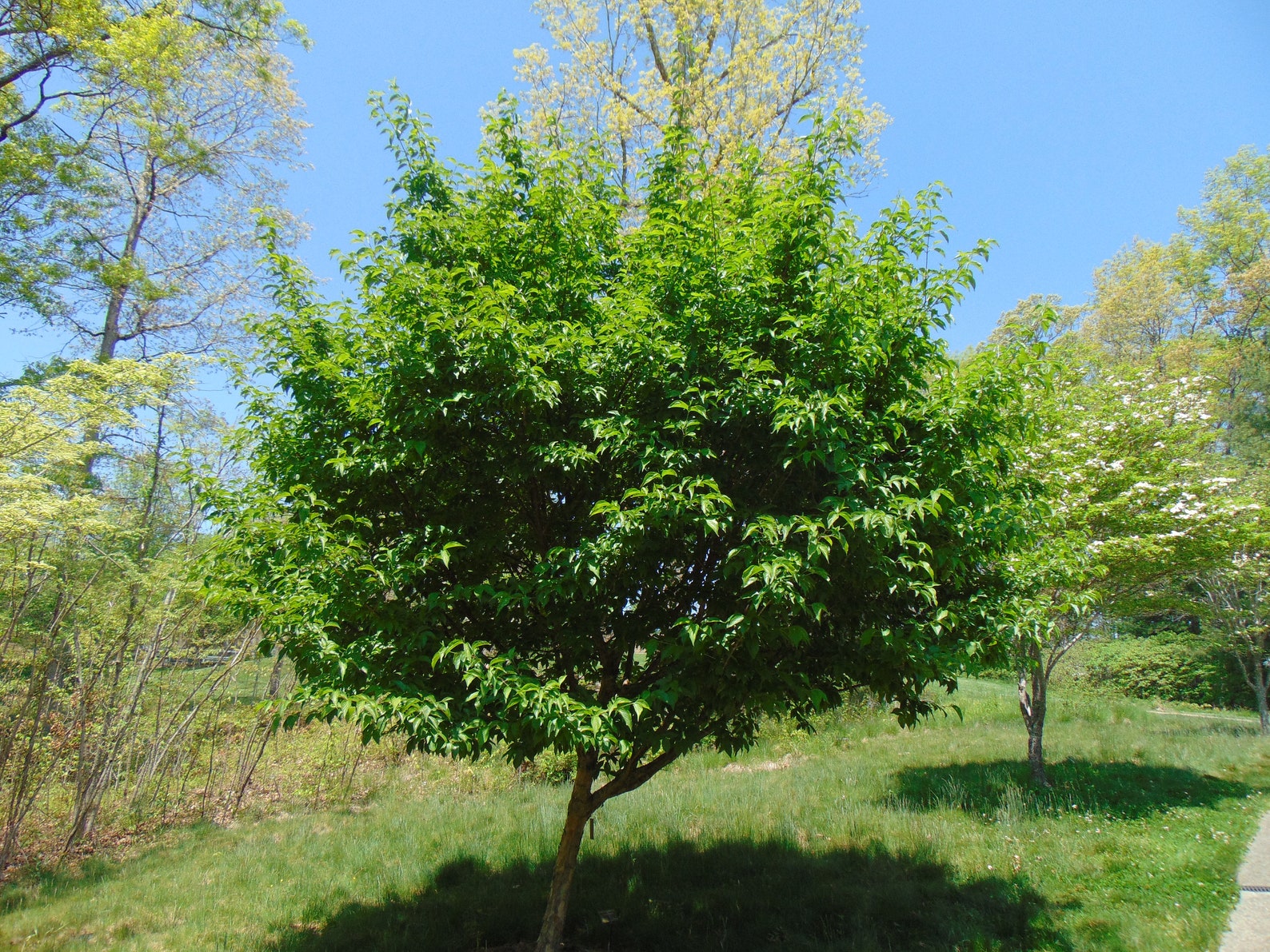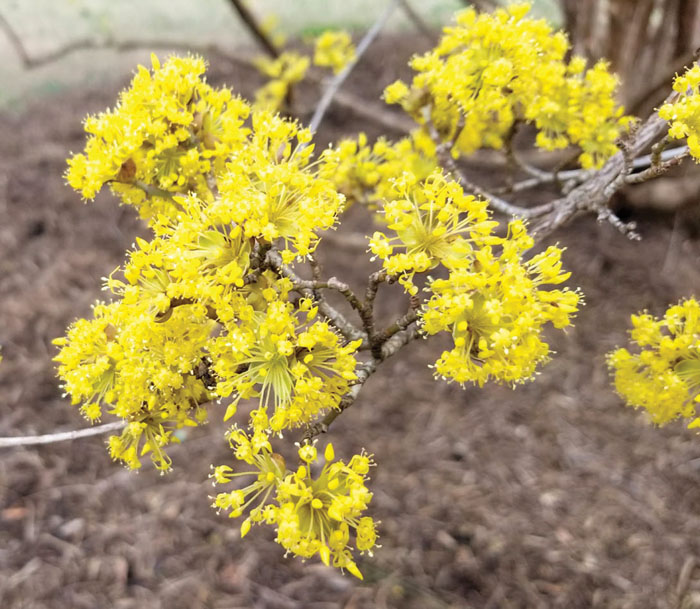

Common name refers to the cherry-like fruits which resemble in color the semi-precious gemstone carnelian (or cornelian). This name was applied to this plant because it was seen as the opposite of Cornus sanguinea, known as the female or wild cornel.

The specific epithet mas means "masculine" or "male". Cornus is also the Latin name for cornelian cherry. Genus name comes from the Latin word cornu meaning horn in probable reference to the strength and density of the wood. Fruits may be used for making syrups and preserves. Fruits are edible, although sour tasting fresh off the plant. Fruits are ellipsoid, fleshy, one-seeded berries (drupes to 5/8" long) which mature to cherry red in mid-summer. Ovate to elliptic dark green leaves (to 4" long) typically develop insignificant fall color. Each umbel is surrounded at the base by small, yellowish, petaloid bracts which are much less showy than the large decorative bracts found on some other species of dogwood such as Cornus florida (flowering dogwood) and Cornus kousa (kousa dogwood). Yellow flowers on short stalks bloom in early spring before the leaves emerge in dense, showy, rounded clusters (umbels to 3/4" wide). Scaly, exfoliating bark develops on mature trunks. It typically grows over time to 15-25' tall with a spread to 12-20' wide. doi: 10.15193/zntj/78-089.Cornus mas, commonly known as cornelian cherry, is a deciduous shrub or small tree that is native to central and southern Europe into western Asia. Morphological, physical and chemical, and antioxidant profiles of polish varieties of cornelian cherry fruit (Cornus mas L.) Zywnosc Nauka Technol. Kucharska A.Z., Sokół-Łętowska A., Piórecki N. Physico-chemical and antioxidant properties of cornelian cherry fruits (Cornus mas L.) grown in Turkey. Functional properties of Cornelian cherry (Cornus mas L.): A comprehensive review. Szczepaniak O.M., Kobus-Cisowska J., Kusek W., Przeor M. (cornelian cherry), an important European and Asian traditional food and medicine: Ethnomedicine, phytochemistry and pharmacology for its commercial utilization in drug industry. In folk medicines, different parts of the plant have been used for. Anthocyanins, flavonoids, iridoids, vitamin C and minerals are the major bioactive components of this plant. It is widely used in traditional cuisine and folk medicine in numerous countries of Europe and Asia. doi: 10.1111/j.ĭinda B., Kyriakopoulos A., Dinda S., Zoumpourlis V., Thomaidis N.S., Velegraki A., Markopoulos C., Dinda M. (cornelian cherry) is a member of the Cornaceae family. Antioxidant, toxicity, and iridoid tests of processed Cornelian cherry fruits. West B.J., Deng S., Jensen C.J., Palu A.K., Berrio L.F. Additionally, the potential recovery of these bioactive chemicals from the byproduct is in line with the ideas of green chemistry and sustainable production.Ĭornus mas stones UPLC-ESI-qTOF-MS/MS antioxidants bioactive compounds ellagitannins gallotannins technological waste. The principal novelty of our findings is that hydrolyzable tannins, unlike other polyphenols, have been earlier omitted in the evaluation of the biological activities of C. mas stone is a source of various bioactive hydrolyzable tannins and shows high antioxidant activity which could allow potential utilization of this raw material for recovery of valuable pharmaceutical or nutraceutical substances.
#Cornus mas in us free#
The presence of free gallic acid and ellagic acid was also reported. The 37 identified compounds included the following: various gallotannins ( 11), monomeric ellagitannins ( 7), dimeric ellagitannins ( 10), and trimeric ellagitannins ( 7).

In this study, the complete qualitative determination of hydrolyzable tannins, their quantitative analysis, total polyphenolic content, and antioxidant properties of the stone of C. The stone is considered to be a byproduct of fruit processing and very little is known about its phytochemical composition and biological properties.

remains the least known morphological part of this plant, whereas the fruit is appreciated for both consumption purposes and biological activity.


 0 kommentar(er)
0 kommentar(er)
